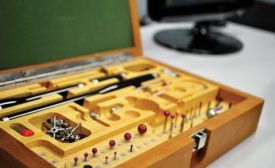Home » calibration
Articles Tagged with ''calibration''
Selecting the Right Calibration System
A calibration expert offers some suggestions.
May 9, 2018
Calibration Considerations
Consider these factors before using the internal calibration feature on your device.
April 9, 2018
Easily avoided situations regularly encountered by gage makers.
Error by design
February 15, 2018
INDUSTRY HEADLINE
Trescal Acquires ASSI Sistemas e Instrumentación S.L. in Spain
January 17, 2018
Get our new eMagazine delivered to your inbox every month.
Stay in the know with Quality’s comprehensive coverage of the manufacturing and metrology industries.
SIGN UP TODAY!Copyright ©2024. All Rights Reserved BNP Media.
Design, CMS, Hosting & Web Development :: ePublishing









